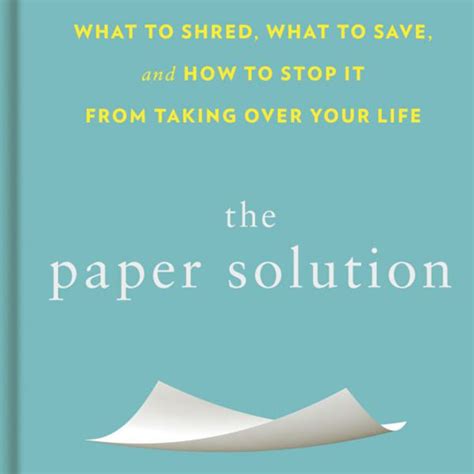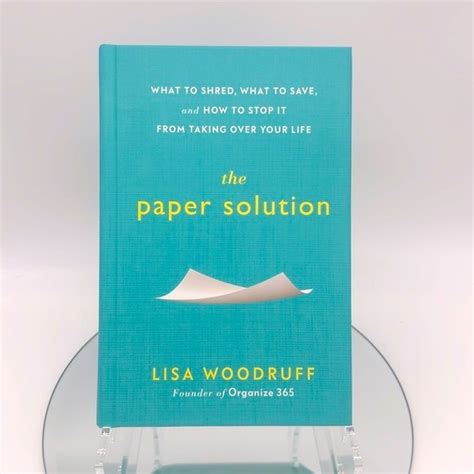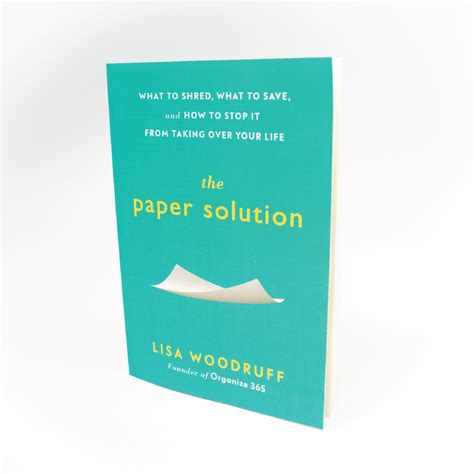Paper clutter can quickly take over your home, leading to unnecessary stress and disorganization. Managing the influx of documents, bills, and receipts that pile up in our living spaces is crucial for maintaining a peaceful and efficient environment. In this article, we’ll explore proven strategies to conquer paper clutter, helping you regain control over your home’s documents. From identifying the sources of clutter to implementing effective sorting and storage systems, these tips will guide you toward a more organized and clutter-free life. Whether it’s setting up a designated paper station or adopting digital storage solutions, these actionable steps will streamline your paper management and bring order to your home.
Let’s explore this topic in detail with shzow.com
1. Identify Sources of Paper Clutter
Paper clutter originates from a multitude of sources, and recognizing these sources is the initial step towards effective management. In many households, mail is a primary culprit – daily deliveries of bills, advertisements, and magazines can accumulate rapidly if not addressed promptly. Another substantial source stems from paperwork associated with household finances, including bank statements, tax documents, and insurance papers. These essential documents are frequently retained “just in case,” but without a structured system, they can easily become overwhelming.
Furthermore, personal items, including old greeting cards, invitations, and school papers, add to the clutter, as do miscellaneous papers such as receipts, warranties, and instruction manuals. These items are frequently stored in drawers or on countertops, resulting in an expanding collection of unneeded paper.
Even seemingly harmless items like printed recipes, notes, and to-do lists can contribute to a cluttered environment if left unchecked. By pinpointing the sources of this paper clutter, you can address each one systematically and prevent it from overwhelming your space. Recognizing the origins of this clutter allows you to develop focused strategies for managing it. This ensures that only essential documents are kept, preventing the stress and disorganization that comes with an accumulation of paper.

2. Implement a Sorting System
To manage paper clutter, a sorting system is essential. Start by establishing specific categories for your papers, such as “To Do,” “To File,” and “To Shred.” This straightforward approach enables you to immediately sort incoming papers, preventing them from accumulating on countertops and other surfaces. For example, upon receiving mail, promptly place bills or vital documents in the “To Do” category, while non-essential items are directed to the “To Shred” pile.
To enhance organization, establish subcategories within your filing system. Categories such as “Bills,” “Receipts,” “Insurance,” and “Tax Documents” will streamline document management. Employ file folders or labeled bins to maintain order, ensuring easy retrieval of specific documents when required.
To ensure this system functions smoothly, consistency is crucial. Dedicate a specific time each week to sift through any accumulated paperwork, making certain no document goes unnoticed. Forming the habit of regularly sorting and categorizing your papers will prevent clutter from accumulating. This organized approach will not only alleviate stress but also save you valuable time when searching for important documents, ultimately contributing to a tidy and efficient home environment.

3. Create a Designated Paper Station
A designated paper station is key to keeping your home organized and preventing paper clutter from taking over. This central hub acts as a collection point for all incoming documents, mail, and papers. Here, you can sort and store them efficiently. By having a dedicated space for paper management, you ensure that important documents are readily available and that clutter doesn’t spread throughout your living area.
To build a functional paper station, select a location that offers both convenience and practicality. A space near the entrance, kitchen, or home office is ideal, as these areas are typically where mail and paperwork are processed. To organize your station effectively, use trays, bins, or folders labeled with different categories like “Urgent,” “To File,” and “To Shred.” This system allows for prompt sorting and ensures all paperwork remains organized.
Beyond sorting tools, consider adding a shredder, a recycling bin, and essential office supplies such as pens, paper clips, and sticky notes. These items facilitate efficient document processing and management directly at your workspace. The goal is to create a functional and readily accessible paper station where paperwork can be addressed quickly.
Centralized paper management creates a streamlined system, minimizing clutter and ensuring efficient handling of important documents.

4. Adopt a Regular Shredding Routine
Maintaining a regular shredding schedule is crucial for managing paper clutter and safeguarding your personal information. Many documents found in your home, like bank statements, old bills, and expired credit cards, contain sensitive details. Instead of allowing these papers to accumulate, develop a routine of shredding anything that’s no longer needed but holds personal data.
Designate a specific day each week or month to tackle your paper station and shred any unnecessary documents. By keeping a shredder readily available at your designated paper station, this task becomes quick and convenient. This routine not only promotes a clutter-free home but also guarantees the secure destruction of sensitive information, effectively minimizing the threat of identity theft.
Beyond regular shredding, utilizing a recycling bin for non-sensitive papers offers an additional advantage. This practice not only minimizes clutter but also contributes to a greener home environment. By organizing and managing your documents effectively, you can ensure a tidy and sustainable living space.
5. Utilize Digital Storage Solutions
Digital storage solutions offer a fantastic way to combat paper clutter and ensure vital documents are securely stored and readily accessible. Transforming physical papers into digital files liberates valuable space in your home and streamlines document management.
Begin by digitizing important documents, like contracts, receipts, and tax records, using a scanner or a mobile scanning app. After digitization, these files can be organized into folders on your computer, cloud storage, or an external hard drive. Label and categorize each file as you would with physical documents, ensuring they are readily accessible when needed.
Cloud storage services, such as Google Drive, Dropbox, or OneDrive, provide the advantage of being accessible from any device with internet connectivity. This allows users to access their documents remotely and securely share them whenever required.
Embrace digital storage and say goodbye to paper clutter! By incorporating it into your daily life, you can significantly reduce the amount of paper in your home, simplify your organization, and ensure your documents are safe from loss or damage. This modern approach to document management creates a clutter-free environment while making all your important information readily accessible.
6. Set Up a Filing System for Important Documents
A well-organized home depends on a reliable filing system for important documents. This system not only keeps your papers in order, but also guarantees that you can quickly locate essential documents whenever needed. Maintaining a structured filing system ensures that vital information is always at your fingertips.
First, choose a storage solution for your documents, such as a filing cabinet, drawer, or portable file box. Then, organize your papers into general categories like “Financial,” “Medical,” “Legal,” “Home,” and “Personal.” Finally, within each category, create individual folders for specific document types, such as “Bank Statements,” “Insurance Policies,” “Tax Returns,” and “Warranties.”
Clearly label each folder, using a logical organization system like alphabetical or chronological order. Color-coding folders can also improve efficiency by making it easier to identify different categories. Remember to allocate separate storage space for both current and archival documents. Archival documents are those that need to be kept long-term but are not accessed frequently.
Keep your filing system in tip-top shape by reviewing and updating it regularly. Toss out old or irrelevant documents, and make sure new papers are filed promptly in their proper locations. A well-organized filing system safeguards your important documents, makes them easy to find, and keeps clutter at bay, leading to a more organized and stress-free home.
7. Establish a Daily Paper Management Routine
To prevent paper clutter from building up and keep your home organized, it’s crucial to establish a daily paper management routine. Dedicate a specific time each day to handle incoming papers. This could be early in the morning or right before bed, whichever best suits your schedule.
During this period, organize incoming documents by placing them in their designated paper stations. Prioritize and address urgent items promptly. File non-urgent documents in their appropriate folders, and set aside those requiring further action. Securely shred any documents containing sensitive information that are no longer needed.
Daily processing of paperwork prevents clutter from accumulating and ensures timely management of important documents. This routine reinforces good habits, making it easier to keep your paper system organized in the long run. By incorporating daily paper processing into your schedule, you maintain control over paper clutter, creating a more organized and efficient living space.
8. Use Labels for Easy Organization
Labeling is a practical and effective method for maintaining a clear and easily navigable paper organization system. Labels allow for swift identification and retrieval of documents, minimizing the time spent searching for essential papers and the risk of misplacing important items.
Begin by clearly labeling your file folders, bins, and trays with descriptive tags. Utilize labels such as “Utilities,” “Medical Records,” or “Tax Documents” to categorize different types of paperwork. This facilitates efficient sorting and retrieval of documents whenever required.
For improved organization, consider using color-coded labels or folders. Assign different colors to various categories, such as blue for financial documents and green for personal papers. This visual system allows for quick and easy identification of document categories at a glance.
Along with file folders, consider using labels on your paper station trays and bins. Labeling them with categories such as “To Do,” “To File,” and “To Shred” helps ensure efficient sorting and processing of papers. Incorporating labels into your paper management system streamlines organization and maintains a clutter-free environment.
9. Involve the Whole Family in Paper Management
A well-organized home depends on the whole family’s commitment to paper management. This shared effort not only divides the workload but also cultivates a sense of responsibility and teamwork, making the system efficient and effective.
To ensure success, begin by educating all family members about your newly implemented paper management system. Emphasize the significance of proper sorting, filing, and disposal of paperwork. Clearly explain each person’s role in maintaining the system’s organization, whether it involves sorting incoming mail, filing important documents, or securely shredding sensitive information.
Establish straightforward guidelines for each family member to follow. For instance, designate a specific location where all mail and papers should be dropped. Implement a routine for reviewing and processing these items. Encourage family members to consistently check their assigned areas and take responsibility for managing their own paperwork.
Collaborating on paper clutter management makes the task less intimidating and more achievable. This unified effort contributes to a structured home environment, minimizes the risk of misplaced documents, and…
Effective paper management is key to a clutter-free home and reduced stress. By identifying sources of paper clutter, implementing a sorting system, and creating a designated paper station, you lay the groundwork for an organized space. Regular shredding, digital storage, and a well-maintained filing system further streamline document management. Involving the whole family ensures lasting success. Embrace these strategies for a more orderly and
shzow.com
